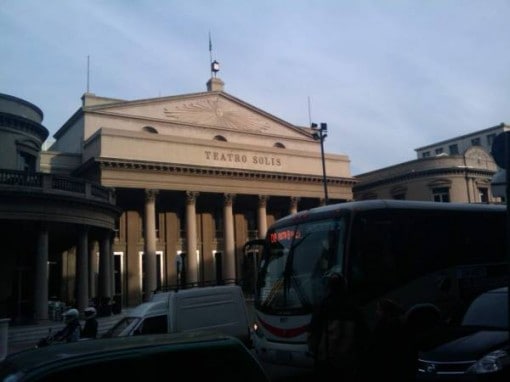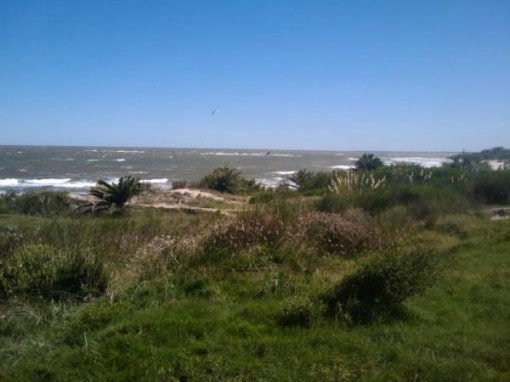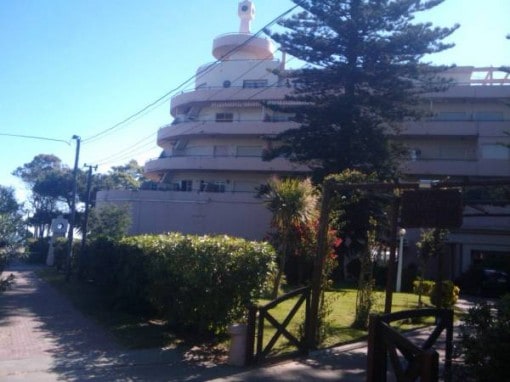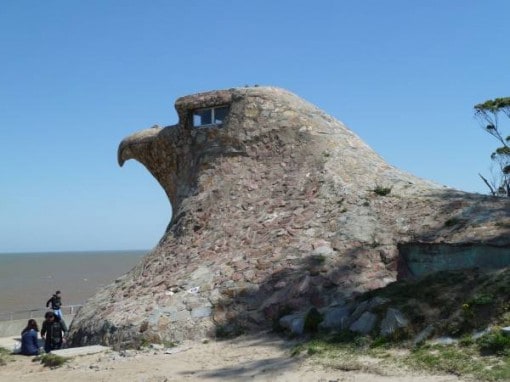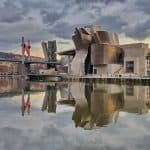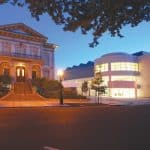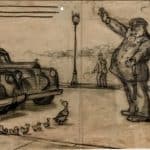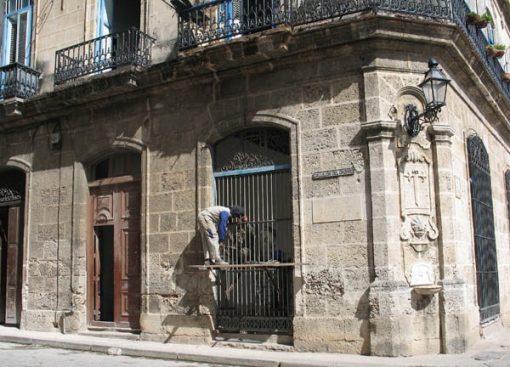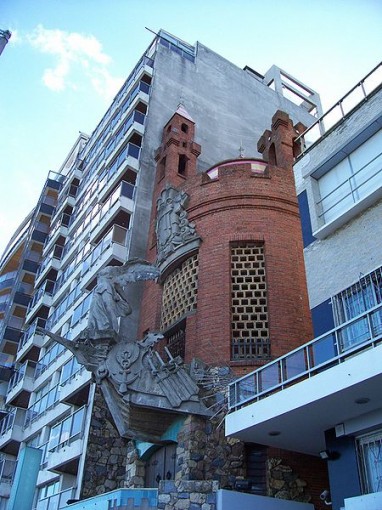 Information about the museums of Uruguay won’t fill up the pages of your guidebook, but anyone with an affinity for the whimsical and the unusual will have a field day in this quirky South American country. This two-day museum excursion explores the wackiest wonders of two Uruguayan cities: Atlantida and Montevideo. And when you’ve had your fill of museums, you can plan the rest of your stay with these recommendations for a one-week itinerary in Uruguay.
Information about the museums of Uruguay won’t fill up the pages of your guidebook, but anyone with an affinity for the whimsical and the unusual will have a field day in this quirky South American country. This two-day museum excursion explores the wackiest wonders of two Uruguayan cities: Atlantida and Montevideo. And when you’ve had your fill of museums, you can plan the rest of your stay with these recommendations for a one-week itinerary in Uruguay.
Day 1: Montevideo Carnival Museum
The carnival in Montevideo lasts 40 days, making it the longest carnival in the world. It’s an insanely joyous cultural experience, but some people find that the non-stop insanity subtracts from the joy. Then, there are the costs. Carnival takes place in February, that’s summer in Uruguay. Visiting during this season will take a significant chunk of change out of your piggy bank.
The Carnival Museum offers a vicarious carnival experience for a fraction of the price. Opened in December of 2006, and occupying 4 million square feet in an old train depot, the Museo del Carnaval is a key attraction in Montevideo. The architecture of the building alone justifies a visit – its front door once belonged to Teatro Solis, Uruguay’s oldest theater dating back to 1856.
A cobblestone road runs through the museum’s interior, driving home the point that carnival is a neighborhood street festival. Detailed notice boards hang from the walls and provide information about the exhibits residing within each of the museum rooms. A 35-minute guided tour in English or Spanish is available for an extra fee.
A Brief History of Carnival in Uruguay
About 93 percent of the Uruguayan is of European descent, and during the late 19th century, these European ancestors occupied most of Montevideo, along with their imported slaves from African nations. The slaves occasionally gathered and practiced “candombe,” a drum-based music and dance form from African cultures. Candobe continued after Uruguay abolished slavery, and by the 20th century it evolved into Carnival, a municipally sanctioned part of the Uruguayan event calender.
Other carnival performers include the Lubolos, Pariodistas and the Murgas. The Lubolos are Caucasian men, who paint their faces black, and sing songs about missing the African homeland. These performances are a Uruguayan form of apology for the slavery practices of their European ancestors. The Murgas – groups of 17 performers – perform musical political satire in the open streets and local theaters. Pariodistas work the crowds and perform parodies of politicians and well-known local figures. The carnival museum features a chronological display of the carnival performers’ costumes.
Time for Lunch
The Museo del Carnaval sits in the heart of Montevideo’s Ciudad Vieja or old town. This neighborhood houses the Mercado del Puerta or “port market.” Its story unfolds in1885, when a Spanish merchant purchased 3,500 feet of retail space on a tract of land in downtown Montevideo, and named the building “Mercado del Puerto.” The stunning Art Deco structure is home to an indoor market space, where independent artisans sell their crafts, jewelry and artwork. Hungry visitors gather for meals at one of parillas or grills that populate the market.
Your multi-course meal consists of different cuts of meats, served with a variety of seasonings. Guests watch as the meat is grilled before them. Vegans and poultry eaters should not be discouraged; grilled chicken and grilled veggies are available.
Into the Mysticism at Castillo Pittamiglio
Across town, in Montevideo’s upscale and trendy Pocitos neighborhood, a different type of museum hides between two high-rise buildings. The red-brick towers, along with the replica statue of the Victory of Samothrace, marks the entrance of Castillo Pittamiglio.
Castillo Pittamiglio is the result of the two passions of Humberto Pittamiglio, the castle’s designer – architecture and alchemy. Labyrinths and occult symbols fill the castle’s interior. Local tour guides explain that the labyrinths represent the alchemist’s journey of the soul, a path that is never linear.
Visitors who tour the castle meander through square, circular, and octagonal rooms whose shapes symbolize earth, the heavens, and the mid-point between the two. A tree of life represents the union of heaven and earth. Alchemist, Templar, Masonic, and Rosicrucian symbols fill the rooms. Guided tours are offered on Tuesday, Thursday, Saturday and Sunday. Call in advance to ask if English tours are available.
If you feel like splurging for dinner, Castillo Pittamiglio houses the Montecristo Restaurant. For the ultimate splurge, hire a violinist to play for you while you dine.
Head to Atlantida
Both Montevideo and Atlantida are pedestrian-friendly cities. While you can rent a car to get between the two cities, you would miss out on the Uruguayan bus ride experience. Erase any images you have of South American chaos, Uruguay’s President insists on bus system efficiency. In fact, he fines drivers if the bus doesn’t leave on time. Fares range from under one dollar to up to three dollars for traveling between cities, and musicians, and vendors add interest to the ride.
Buses in Montevideo leave from the two-story Tres Cruces Terminal, which also has a variety of small shops and fast food restaurants. To find the correct bus, go to Montevideo Bus website, find your destination on the map, and click on your destination. A list of buses will appear. Take the 710 or the C4 bus to get to Atlantida. Tell the driver that you are going to Atlantida, and ask him to let you off near El Aguila, your next destination.
Day Two: Atlantida
The coastal town of Atlantida, one of Uruguay’s earliest resort towns, is about 75 minutes from Montevideo by bus. Its diverse architecture, along with its strange mix of eucalyptus and pine trees and sand dunes are the town’s distinguishing qualities. The trees date back to1908, when a group a group of Uruguayan doctors and medical students stabilized the sand dunes by planting the trees. In doing so, they also beautified the town’s beaches. The doctors and medical students named the town “Atlántida,” as a nod to Plato’s legendary lost continent of Atlantis.
The Eagle the Planeta Palace
As your bus approaches Atlantida, you’ll notice a stone structure in the shape of an eagle’s head. Welcome to the Eagle, or, in Spanish, El Aguila, whose existence resulted from collaborations between a wealthy Italian millionaire and an architect, both with vivid senses of imagination.
Natalio Michelizzi, born in Southern Italy, spent a good portion of his life across the Rio de la Plata in Buenos Aires, where he represented the manufacturers of a printing machine called Planeta. Like many portenos, a word Uruguayans use to describe people from Buenos Aires, he often vacationed in Atlantida.
Michelizzi was not immune to the coastal town’s seductive charms and in 1935 he commissioned an architectural firm to construct an enormous pink hotel shaped like a cruise ship. As if that’s not weird enough, the hotel, called Planeta Palace, has a martian-like antenna on its roof.
In its time the hotel’s casinos and and luxurious amenities attracted actors, artists, politicians and athletes from around the world.Today La Planeta Palace is a residential building, but you can go inside and see the lobby, which is shaped like a cruise ship lounge.
In 1945, Michelizzi commissioned Uruguayan builder Juan Torres to build him a statue of the Blessed Virgin. The result was a stone house in the shape of an eagle’s head. While most people would have been furious, Michelizzi decided to use the building as a venue for meditating, reading, painting and entertaining.
For many years sinister rumors surrounded its existence. Some people thought it was a smuggling house, while other whispered of a strange Nazi hideout built in the shape of an eagle. The interior of the the Eagle now functions as a museum which chronicles its history.
A two day tour of Uruguay museums is a glimpse into the culture of a fascinating country. But don’t stop with Atlantida and Montevideo. If time permits,continue east! There’s much more to see!
Photo credits: Federico Corral via wikimedia (Castillo Pittamiglio): courtesy of Andrew Ross (The Eagle); all others courtesy of the author.
You might also enjoy
Lisa Marie Mercer specializes in self-reinvention. She spent most of her life as a New York City fitness instructor. A passion for although things Italian delivered her to Perugia Italy, where she studied Italian and traveled throughout the country. Fast forward to 2004, and an addiction to alpine skiing moved her to Colorado, where she opened a ski fitness studio, and worked as a tour guide for the town of Breckenridge. After hopping around North America and most parts of the globe, Lisa and her husband are enjoying the expat life in Uruguay. This is the author of Breckenridge: A Guide to the Sights and Slopes of Summit County. Learn more at her Fit to Travel Website. http://lisamariemercer.wordpress.com/
